
Both science and common sense tell us we should avoid discussing topics at work that incite emotion and make us irrational. Hundreds of behavioral science studies show that people rarely understand the true intentions of others. Two main reasons exist. On one hand, we all exhibit thinking biases, and these biases distort how we interpret what others tell us. On the other hand, even if we as listeners take pains to counter our biases and think correctly, emotions aroused by controversial, hot-button topics, can deplete abilities to reason. This two-fold assault on the mental strength or cognitive control can lead to misunderstandings and getting viewed as a threat.
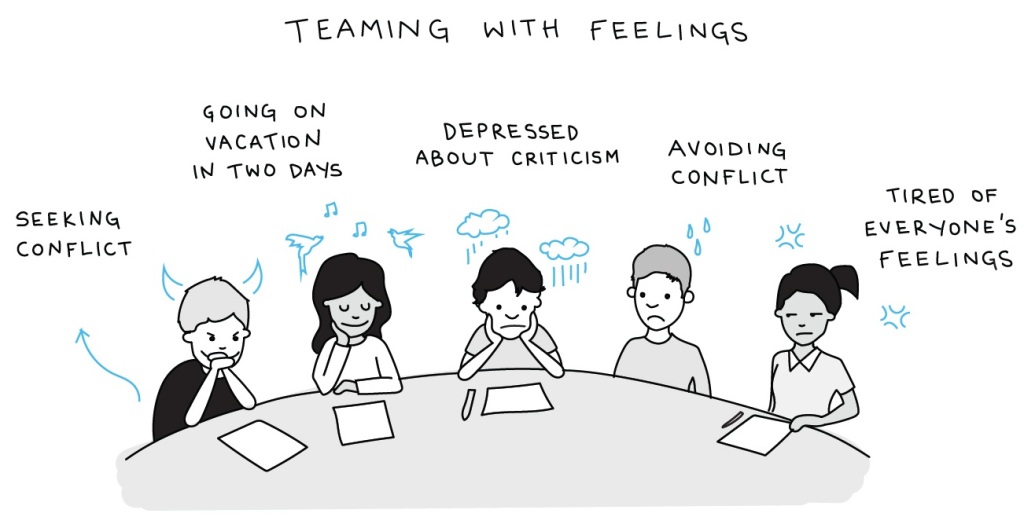
For all those reasons, it is essential we appreciate the consequences of raising, controversial, hot button topics in the wrong place or at the wrong time—especially at work. Unfortunately, many of us undermine the efforts to bring about meaningful change in organizations by deferring to non-empirical tactics that ignore the cultural and emotional contexts of where we work. When serious issues do need to be discussed (e.g., harassment, fraud, discrimination, incompetence, etc.), informal discussions do not do them justice. Otherwise, people’s mental hang-ups and cognitive biases will creep in.
Take, for example, a work environment where status quo bias makes people resistant to change. Assuming we ignore this fact and decide to raise the issue of weight-discrimination (bias against overweight people) during a team remote call meeting aimed at launching a new product line. Even though the problem does not impact the main agenda, we specifically refer to a colleague, also on the call, who is struggling with his/her weight. The result may be that everyone in attendance will feel uncomfortable, even the overweight colleague, and that might even be needed—to rock the boat, point out the elephant in the room, dispense justice, etc. Undeniably, according to science—and to common sense—the efforts will backfire.
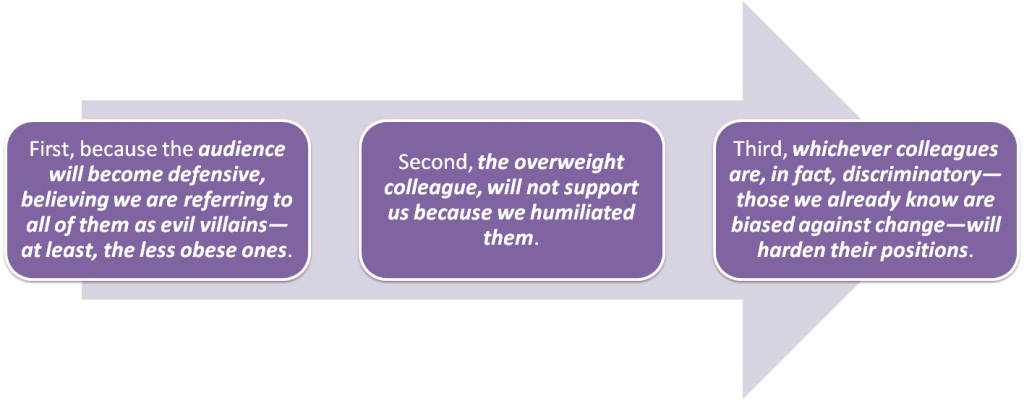
In the end, they will deny the accusations and perhaps even gear up to retaliate against us and overweight colleagues.
Some Ways To Craft An Approach For Discussing Controversial Topics At Work:

A) Making sure there really is a quantifiable problem:- . . . There is a fallacy commonly observed in behavioural science known as mind projection- when we believe everyone around us has the same worldview we possess. As in the above example, if we believe weight discrimination at our company exists, and we believe everyone else sees the same thing but is not acknowledging it—even overweight colleagues. This assumes that we know something and the rest of those most affected do not—and that’s just plain arrogance.
Also, a bias known as fundamental attribution may be leading us to assign meaning and context to what others do when that meaning is not there. All that is not to say the discrimination does not exist. Rather, it’s to say we need make sure it exists beyond the example we have lemon-picked. Indeed, lemon-picking itself hints of a common bias known as confirmation, which can work against us. For example, we might assert a problem exists while others can pick an example to suggest it does not. The only way to prevent this stalemate is to gather the facts and data first—perhaps by side-barring those who might be affected and seeing if there really is a problem.
B) Finding out what the affected colleagues want:- . . . A defining aspect of emotional intelligence involves understanding the emotional states of others. Before raising a controversial issue, we should probe to see how those most affected by it will feel by us discussing it. In other words, just because it is a problem does not mean other people affected want it resolved or that they want us to resolve it. It is surprising how many otherwise socially adjusted people insist on raising hot-button issues to create discomfort or to label themselves as “straight shooters”.
In doing so, they follow the misguided belief that their actions aid improvement, team cohesion or performance. More often, raising an issue that embarrasses or adversely impacts the affected—without first gaining their buy-in—will do more harm than good. The buy-in and a gauge of fallout of the affected is extremely essential.
C) Examine the context:- . . . The next thing is to choose the right context. In the above example, bringing up weight discrimination was out of context because the focus of attention by the team was on a business matter. Numerous studies have shown that when primed to focus on business objectives, we discount ethical and moral issues. This bounded ethicality effect suggests due attention will not be paid to an ethical issue when raised completely out-of-context. Not only are people likely to ignore the issue, but they may also defend their positions despite the evidence presented. However, if the context of discussion is ethical, ethical issues will be given due consideration. The best way to broach a controversial issue is to first ensure all minds are focused away from financial goals and objectives.
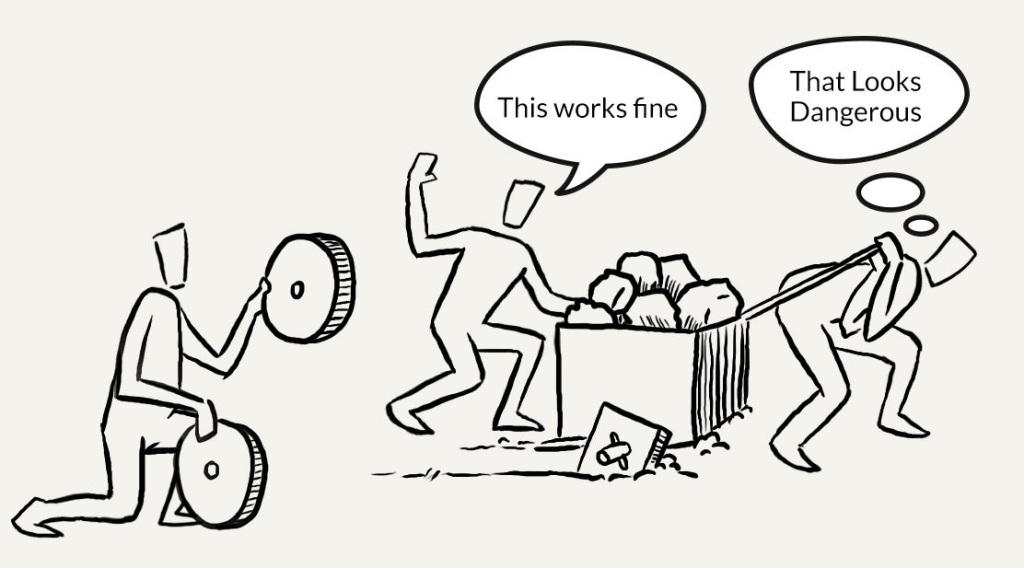
D) Frame the solutions:- . . . Under framing (another behavioural bias) our decisions (and thinking) change based upon how information is presented to us. How we raise controversial issues matters in terms of how people will respond. Evidence shows human beings respond in vague ways to problems (as each has their own solution) but they can typically agree on (or reject) a solution. So, if we want a person to accept the facts and/or case that is being putting forward, one way could be to devise a solution and frame it in a way they will understand and value. The solutions need to be framed on the basis of how the organization works (Organisation culture). For example, in a goal-driven organization, we could try to structure the solution in a way that outlines clear metrics and goals for eliminating the problem. In a more fluid organization, we could offer metrics that will be reviewed periodically as a sort of “health check”.

E) When in doubt, avoid discussing controversial topics:- . . . If, despite all efforts, we do not see the supporting data, the buy-in of the affected or the context appropriate for raising an issue—it is advisable not to discuss it—at least, not informally. There is always the possibility we could be completely wrong about an issue, despite our gut feelings. An issue might be prevalent in our industry, but we do not see evidence it exists in our company. It might exist elsewhere in the organization, but not in our division. The point of not raising it is not to avoid rocking the boat but to avoid tipping it over unnecessarily.
Topics Best Avoided In Discussions at the Workplace-
In the end, there is a time and place for discussing controversial, hot-button topics at work, but seldom is there room for doing so informally. People are not robots, they have feelings, emotions and biases. Assuming that raising an issue is so important that these factors can be ignored is akin to creating more problems rather than solving them. Certain topics are best avoided in discussions at the workplace. This is because they infringe into human behaviors that are rarely understood. Some of these are:
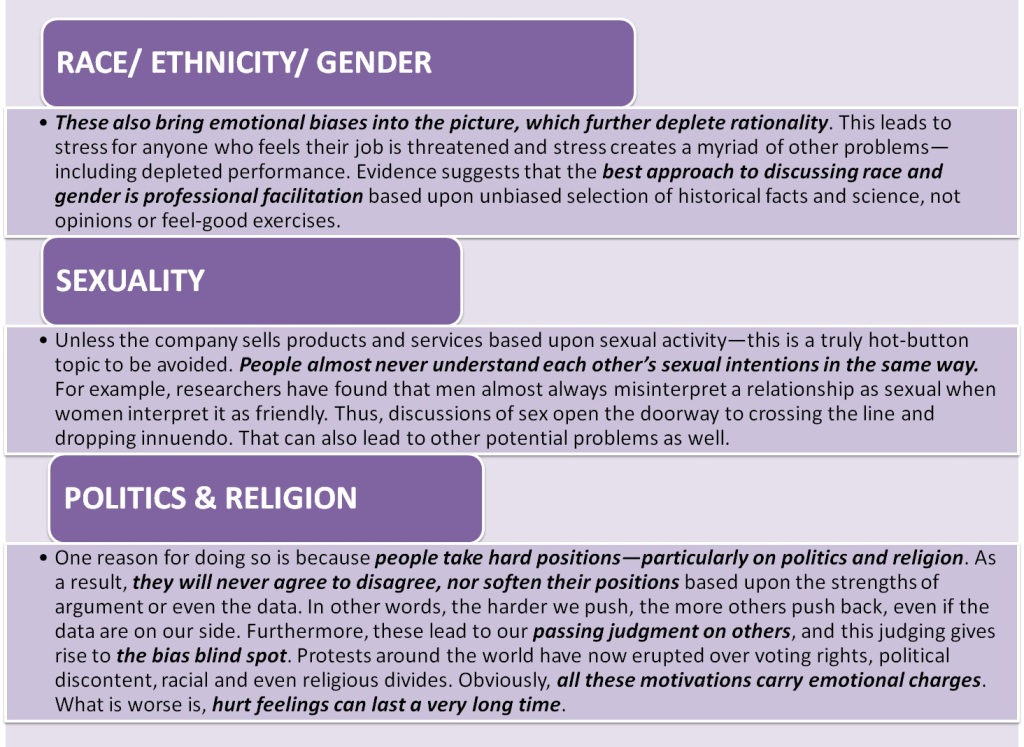
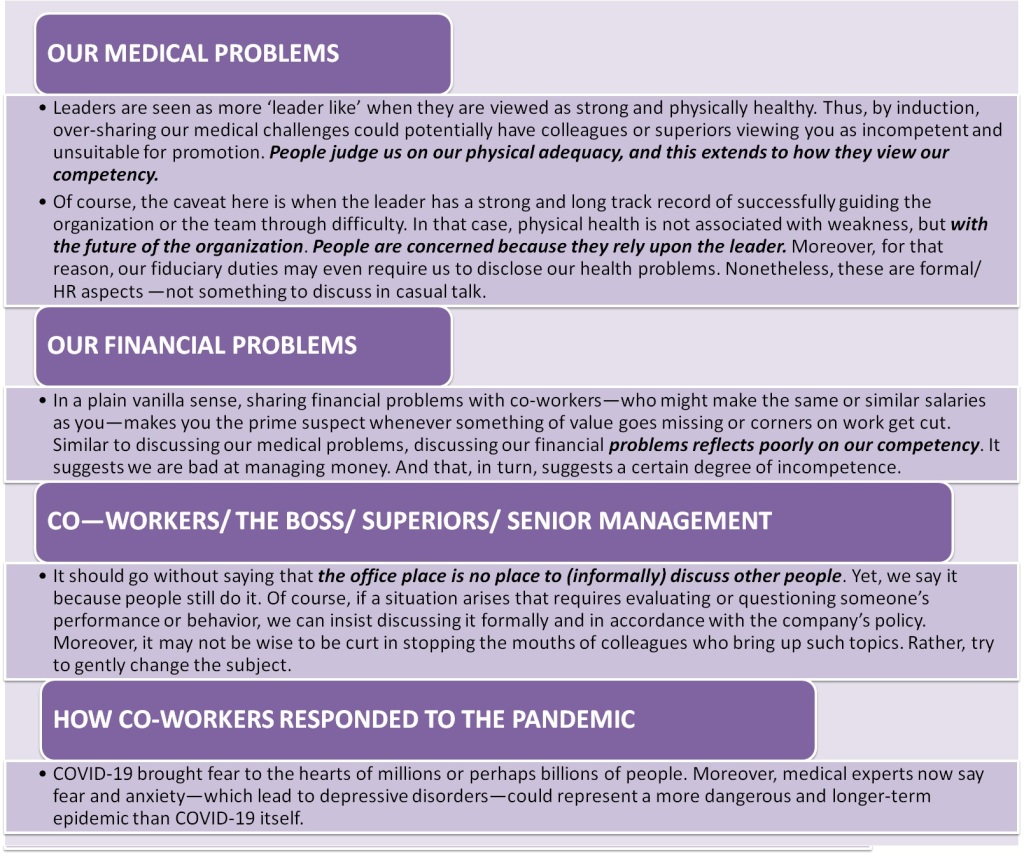
Understanding this, we must appreciate that everyone experiences and reacts to fear differently. For many, fear creates irrationality. It leads them to either freeze or do erratic things or a combination of both. In most cases, a person in fear does not fully understand or even remember their own behaviour—even when it resulted in creating major problems.
For all those reasons and more, highlighting strange or panic behavior in the office place, among colleagues or even in your surrounding neighborhood increases tension, stress and creates more problems. Undoubtedly, vetting concerns around serious issues around the water-cooler can often make things worse. Either we should bring them up only with close friends, one-on-one, or in a formal setting—where facts, data and those affected by the problem can be gathered. Of course, because the above list of topics reflects what is typically covered on the landing pages of most news outlets, we might wonder what then can be discussed. Lots of things—but especially topics that are not emotionally charged or, if emotional, have common, sympathetic markers- make good discussion topics. These include:
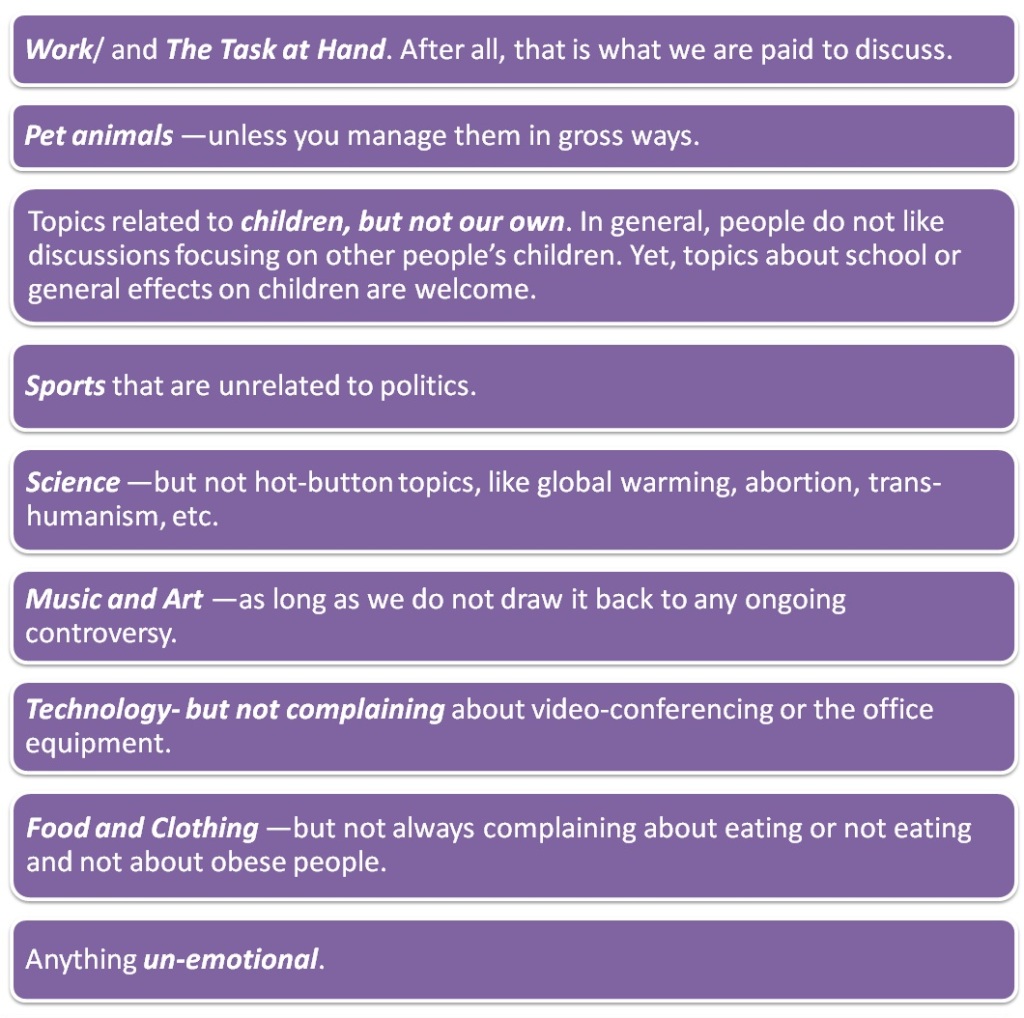
At the end of the day, few of us are paid to discuss hot-button, taboo topics at work. Yet, most of us should understand the extreme risk of doing so.

Content Curated By: Dr Shoury Kuttappa

